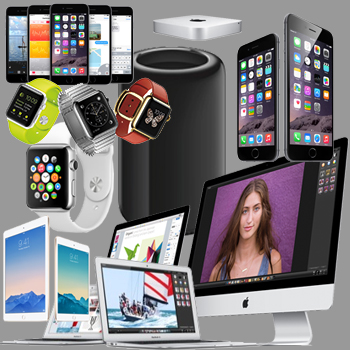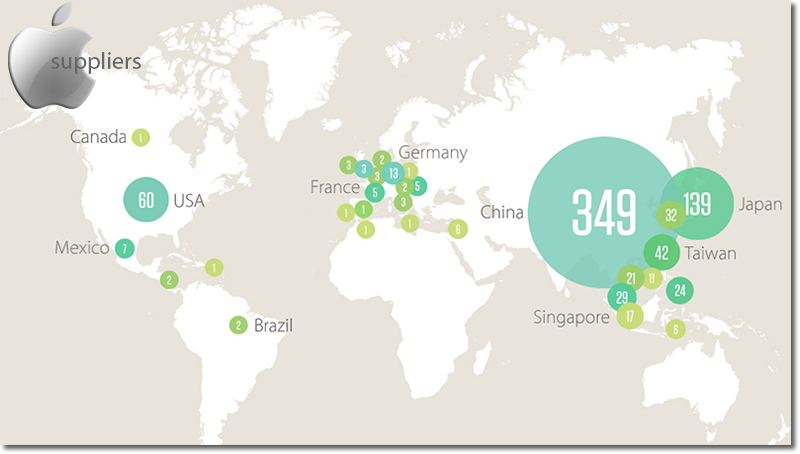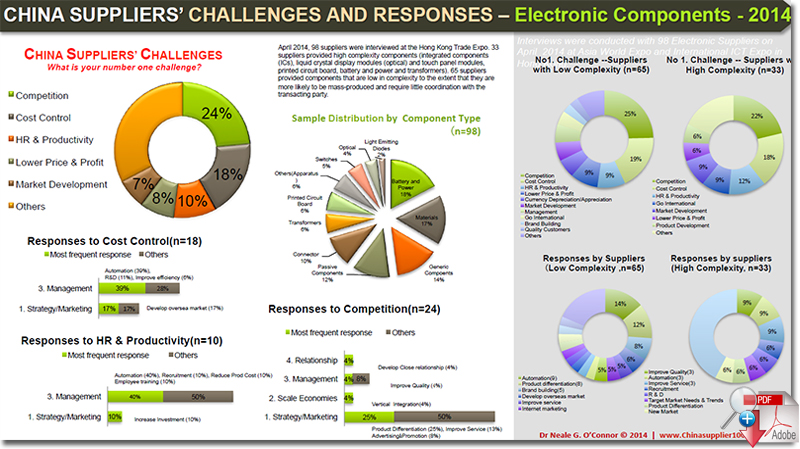What Supply Chain Could Possibly Get 150 Million Products Onto The Global Market?

If a company produces a top-selling product on the back of hundreds of suppliers, it has to be incredibly well organised, it also makes the company susceptible to mistakes, one hiccup in the supply chain and the whole thing can come crashing down.
You guessed it, Apple’s Supply Chain of course!
Apple has just produced its “holiday” quarter results - we hear that it revealed a better-than-expected 16% jump in iPhone sales, and the strongest growth in Mac computer shipments in years.
All Wall Street’s targets were surpassed. As usual we will get a bunch of figures focusing on the same old things - profit and sales margins, competitive position, return on capex and debt-to-equity ratios, but one thing the analysts rarely talk about is the ability to control supply chains.
If a company produces a top-selling product on the back of hundreds of suppliers, it has to be incredibly well organised. Such a reliance also makes the company susceptible to mistakes – one hiccup in the supply chain and the whole thing can easily come crashing down.
Apple comes to mind when you think of a company with arguably the most complex retail product on the market. How does it meet global demand for 150 million iPhone or iPad units (plus the rest of is gadgetry) at the appointed time and place and at such volumes. It must be a logistics nightmare. And it is, until you find out how it happens.
I was lucky enough to be privy to the research of Dr Neale O’Connor, an associate professor at Hong Kong Baptist University’s School of Business, who has been studying supply chains in China for several years. The logistics of putting together Apple’s iPhone and iPads are mind-boggling.
There are 156 names on Apple’s latest supplier list, including major companies such as Samsung, Toshiba, and Foxconn, which has gained recognition (and some infamy) as an assembler of iPhones. However, there are hundreds of second- and third-tier companies that supply to the big names on behalf of Apple which you never hear about.
Apple controls nearly every part of this complex network, leveraging its scale and clout to ultimate effect. The latest iPhone 6 and 6 plus have 200 separate components requiring 90 separate steps in their assembly, not all of which can be automated. All of this would be impossible without absolute control, O’Connor says.
Apple rates quality, technological ability and scale as priorities when it seeks out new suppliers. Cost is lower down the list. Becoming an Apple supplier is not easy. Yet the competition is intense because Apple’s approval is seen as an endorsement of manufacturing prowess.
Apple is the ultimate control freak – its 600-plus technicians on the ground in China and Taiwan will not only check quality control, but the number of inputs, the volume of outputs and total yields from even the most insignificant of widget makers.
In some cases, Apple will install its own machine which the component supplier is obligated to use. “It will then tell the factory it expects 60% of the capacity from the machine. The rest is theirs,” O’Connor says.
Apple also expects a 5% reduction in costs on average across different sectors every three months. So a supplier making a component for $10 one quarter will be expected to produce it for $9.50 the next. This goes on for the lifecycle of the product.
Almost all suppliers are channelled through to Apple’s major component assembler, Foxconn. Its biggest factory in Zhengzhou, China has around 250,000 workers. During peak production of the latest iPhones, workers were organised into 100 production lines that were running 24 hours a day.
At this scale, it comes as no surprise that in 2012, Apple and Foxconn were criticised for the working conditions in the Foxconn factories – all of which have reportedly been rectified. But in response to the criticism, Apple contracted Taiwan-based Pegatron to ensure it was not totally dependent on Foxconn.
Far from being negative, O’Connor says Apple leads the way in large-scale supply chain management. Most buyers ask suppliers to send samples. Apple will examine the entire production process and possibly assess company management. There’s never one component manufacturer – Apple makes sure it can switch to any number of alternatives as a bargaining point for quality and price.
O’Connor adds that it builds into contracts a buffer for defective goods and an option to negotiate discounts for late delivery. It inspects components at various stages, including just before shipment. An established line of communication that includes feedback is necessary to avoid misunderstandings and issues are addressed before they become crises, O’Connor says.
With such an effective supply chain in place, what is the bottom line result for Apple?
By O’Connor’s reckoning, making and delivering an iPhone costs the company between $120 and $150, and on average, Apple’s suppliers make a mere 10% margin on their products. The latest iPhone 6 in the US costs $649. That’s a 450% margin.
Total supply chain control looks like it pays very, very well.
Source: TradingFloor.com
Related: Is Apple’s Supply Chain Really the No. 1? A Case Study

Article Topics
SupplyChainOpz News & Resources
Is Apple Working on a Trump Contingency Plan? A Case Study of Apple Computer’s Supplier Hubs: A Tale of Two Cities The 7 Principles of Supply Chain Management Samsung’s Galaxy Note 7 Supply Chain on Fire Google Overtakes Apple as Most Valuable Company Apple Suppliers Hope to Tap Into New ‘3-D Touch’ Apple iPhone Sales Slack Says Supply Chain Leak More SupplyChainOpzLatest in Supply Chain
C-Suite Executives Investing Heavily in Generative AI Trucking Industry Pushes Back on Government’s Electric Mandates Senators Take Aim at Amazon with Warehouse Worker Protection Act Maersk Sees Silver Lining in Red Sea Shipping Challenges Happy Returns Partners With Shein and Forever 21 to Simplify Returns S&P Global Market Intelligence’s Rogers assesses 2024 import landscape Frictionless Videocast: AI and Digital Supply Chains with SAP’s Darcy MacClaren More Supply Chain
















